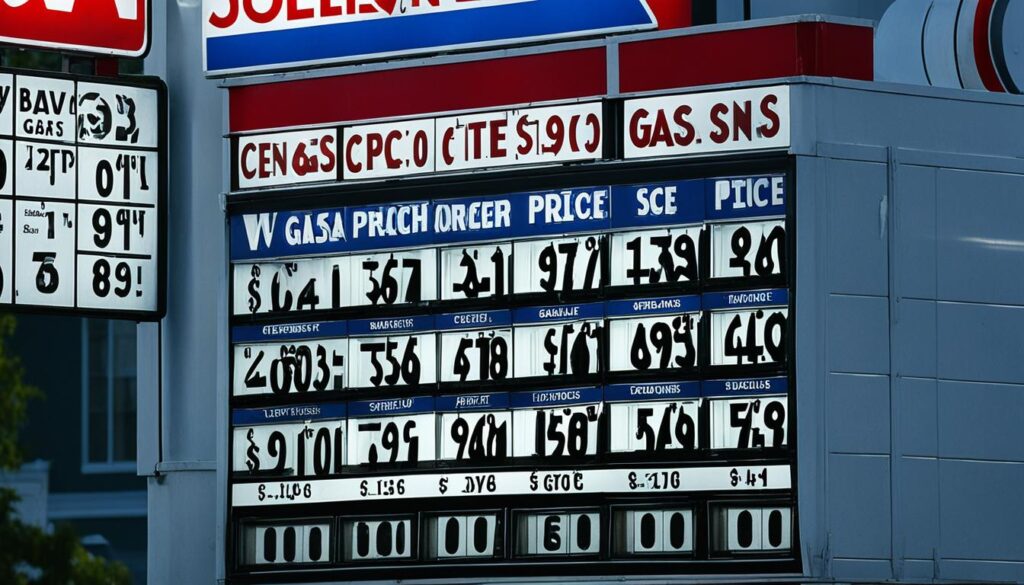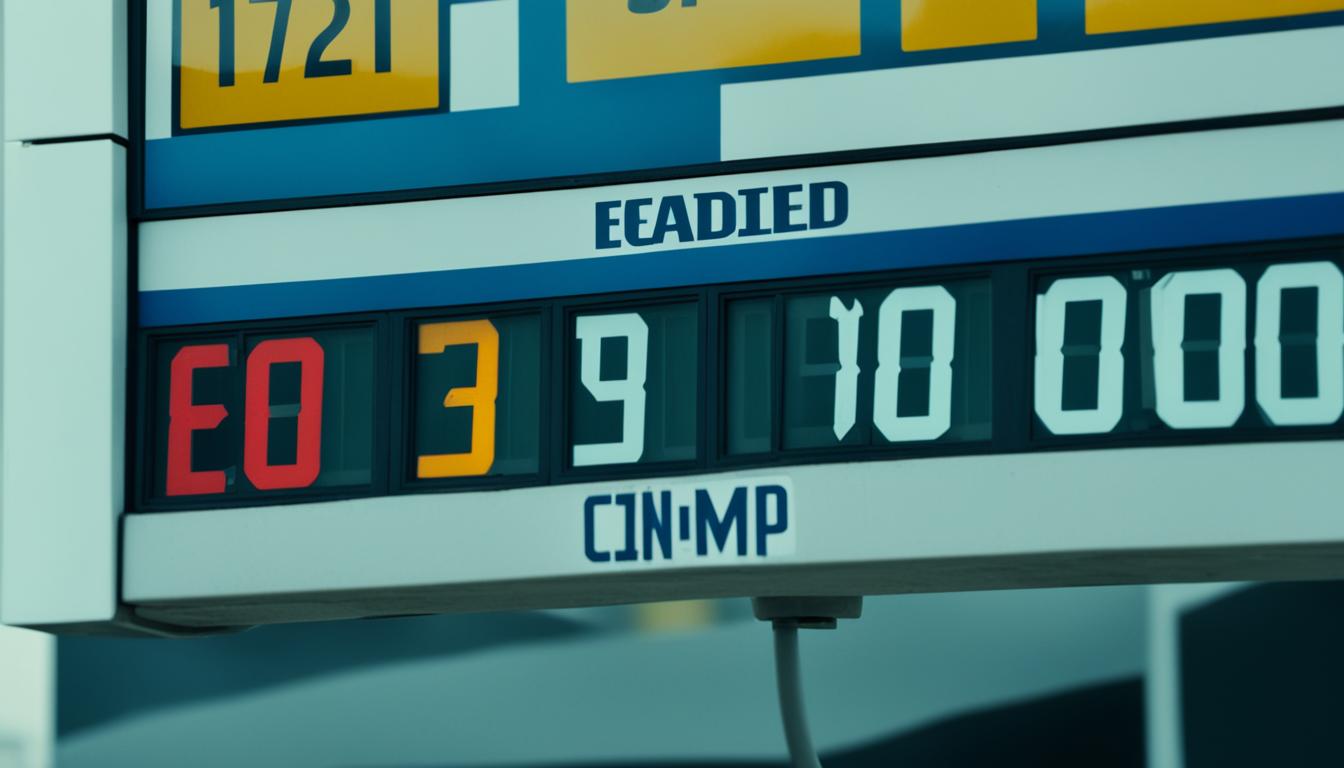Ever notice gas prices ending in 9/10 of a cent? This odd pricing has been around for decades. It’s a mix of old tax laws, marketing tricks, and gas station pricing tactics.
In June 2022, the average U.S. gas price was just under $5.02 per gallon. Prices varied a lot by state. California had the highest at $6.44 per gallon.
But no matter where you are, gas prices always end with 9/10 of a cent. This isn’t just a random choice or clever marketing.
It’s actually based on an old gas price law from the early 1900s. This tiny detail in pricing has stuck around for ages.
It’s shaped how we see and buy fuel for generations. Let’s explore why this odd pricing system has lasted so long.
Key Takeaways
- Gas prices in the U.S. consistently end in 9/10 of a cent due to a combination of historical tax laws, marketing psychology, and modern pricing strategies.
- The average national gas price was just under $5.02 per gallon as of June 2022, with significant variations by state.
- The practice of ending fuel prices with 9/10 of a cent is rooted in a gas price law dating back to the early 20th century.
- This fractional pricing system has endured for generations, shaping consumer perception and purchasing behavior.
- Understanding the history and reasoning behind this pricing convention provides insight into the complex factors influencing gas station pricing.
The History Behind Fractional Gas Pricing
Fractional gas pricing originated in the early 20th century. States began taxing gas in tenths of a cent. Gas stations passed these taxes directly to consumers.
During the Great Depression, gas cost about 10 cents per gallon. Adding a whole cent would’ve been a 10% increase. To help struggling drivers, stations added fractions instead.
As more Americans drove, demand for gas grew. Stations competed fiercely for customers. Fractional pricing helped them advertise lower prices than rivals.
This “just-below pricing” became standard in the industry. It allowed stations to attract more business.
Gas taxes continued to influence fractional pricing. States raised taxes for highway upkeep and projects. Stations used fractions to pass on costs without big price jumps.
This practice has lasted for decades. It’s now a key part of U.S. gas station pricing history.
Gas Price 9/10 Cent Law and the Rise of Just-Below Pricing
By the 1950s, gas stations began using 9/10 cent pricing on highway billboards. This “just-below pricing” strategy makes consumers feel they’re getting a better deal. Prices ending in 99 cents seem much lower than those rounded up.
Gas station owners use this tactic to attract cost-conscious customers. It helps them stay competitive in the market. Consumer psychology plays a big role in this pricing strategy’s success.
Customers focus more on the leftmost digit of the price. This “left-digit effect” is key to just-below pricing’s effectiveness in gas stations.

The 9/10 cent law and consumer psychology work together in gas pricing. Stations follow the law while using psychology to attract customers. This approach helps them stay competitive in the market.
The 9/10 cent law aimed for fair pricing and transparency. Ironically, it led to just-below pricing becoming a main marketing strategy. This pricing method is now common across U.S. gas stations.
Just-below pricing shapes how consumers view gas prices. It influences their buying decisions at the pump. The strategy has become deeply ingrained in the gas station industry.
Modern Gas Pricing Strategies and Fractional Cents
Gas station owners use smart pricing methods to attract customers and stay profitable. They use special computer programs to find the best price for each location. These programs consider fuel costs, local rivals, and how customers view prices.
Gas stations often set prices just below a whole dollar amount. For example, they might charge $4.999 per gallon instead of $5.009. This “just-below pricing” strategy takes advantage of how people view certain price points.
By staying below these thresholds, gas stations make their prices seem more appealing. Even if the actual difference is tiny, it can affect how customers choose. A recent study found this pricing method greatly influences buying choices.
Fractional pricing remains common in the gas industry, despite past attempts to ban it. Iowa briefly outlawed it in the 1980s, but the practice continued elsewhere. Gas stations keep using this method because it works well.
Customers will likely keep seeing prices ending in 9/10 of a cent. Gas stations use this tactic to compete in a changing market. It helps them attract business and stay competitive.

Leave a Reply